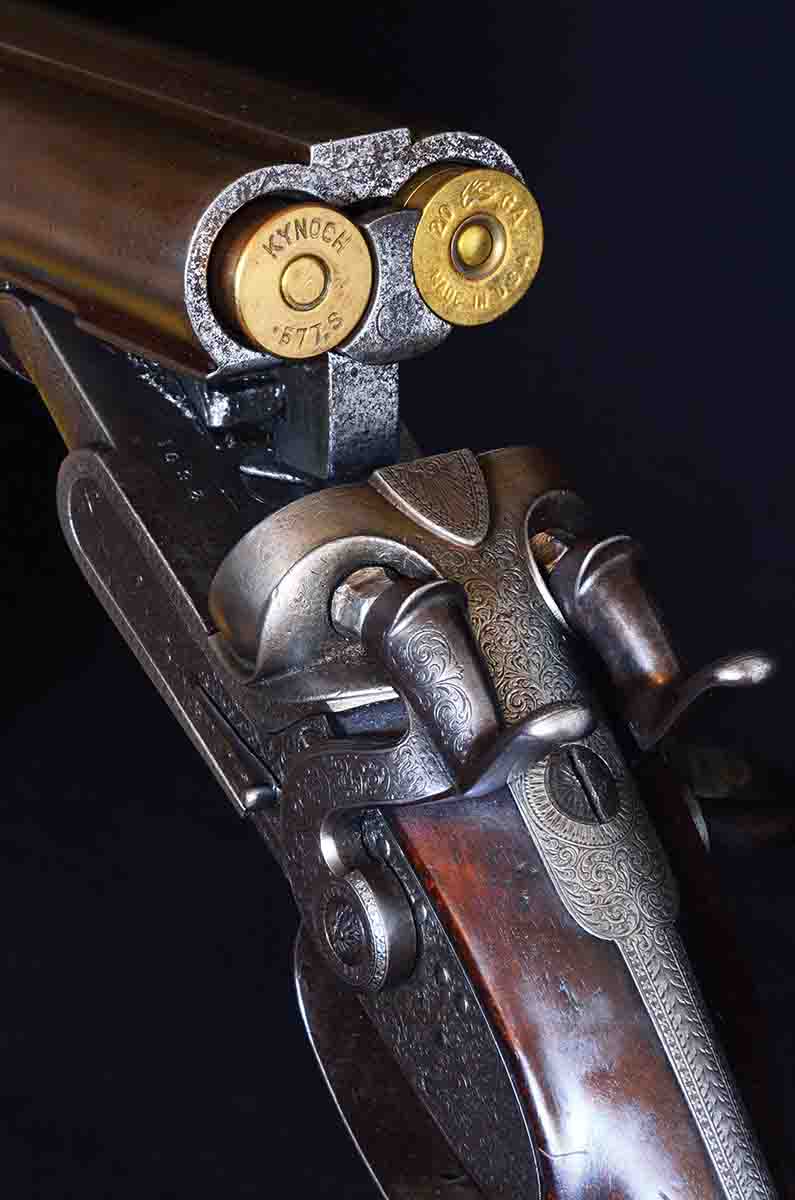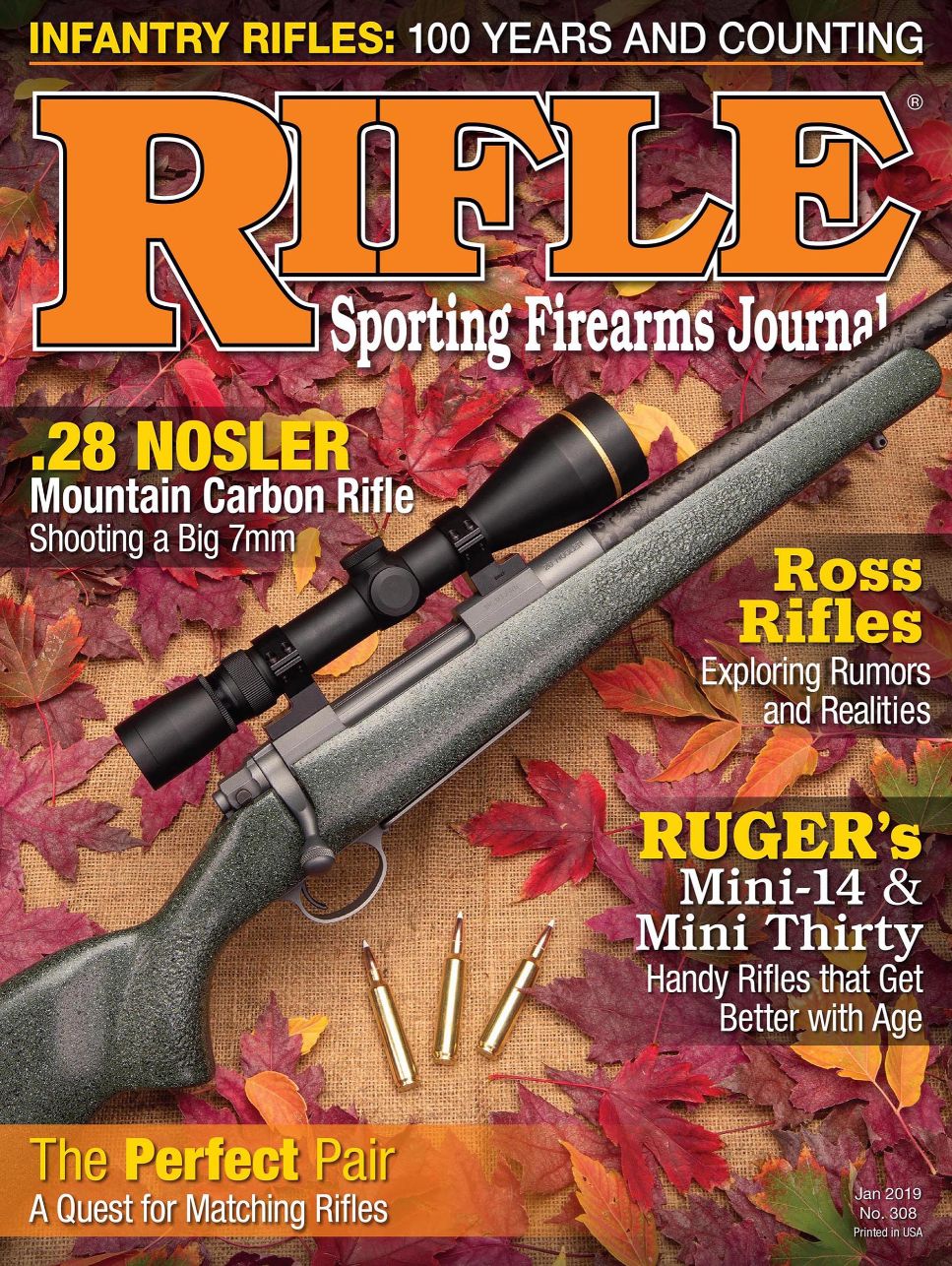Walnut Hill
Collective Insanity
column By: Terry Wieland | January, 20

Gun collectors are very, very strange people. They are so strange, in fact, that even other gun collectors are often at a loss to explain their behavior.
For example, there is now a class of collector that goes by various names, but the one I’ve heard is the “ethical” collector. This is a man – gun collectors are invariably men – who collects military guns of various sorts, but insists on provenance that the specific firearm was never used in action. This seems to me like a contradiction. As someone who owns quite a few military arms of all types and nationalities, I like to look at their scars and imagine where, and under what circumstances, they were used.
Was one of my guns ever in battle? I expect so. And no, I’m not worried about bad juju from a gun with an active past. By the same token, I have long been fascinated by duelling pistols, although I’ve never been able to afford a set. Not only do I see nothing wrong with duelling, morally, I agree with Walter Winans who wrote, well into the twentieth century, that he saw positive results from a return to legal dueling as a means of settling disputes. Compared to endless litigation, it looks pretty good from here.
James J. Grant, who was a life-long collector of single-shot rifles and became America’s acknowledged expert on the subject, was often at a loss to explain his fellow collectors. For example, he could not understand those who demanded specimens that were in virtually unfired condition, and who were horrified at the idea of taking a rifle out and shooting it. He wrote that he had no interest whatever in owning a rifle he could not shoot. In fact, much of his pleasure in collecting was acquiring an old rifle and doing whatever it took to get it shooting again.
Owning a functioning firearm, as opposed to a so-called “display” model, like many machine gun replicas, is important to many of us. I’m not sure I can explain just why this is. Perhaps it’s some atavistic subconscious feeling that, at some point, I might need to pull an old gun down off the wall and use it to repel boarders. Whatever it is, it’s important.
Some years ago, when Canada was going through one of its periodic paroxysms of gun-control mania, a lawyer acquaintance of mine offered a few opinions as to how the whole question might be settled to almost everyone’s satisfaction by implementing a few rules of his devising. One was that target shooters could keep their pistols, but they would be stored in police armories and only checked out when they were on their way to the range. They would be allowed out for a few hours (not unlike day-parole) then checked back in after the range session.
Another, this one aimed at gun collectors, was that old firearms should be permanently deactivated and certified as such. You could still display your ancient Snider-Enfield but it would be as harmless as a hockey stick (which is not all that harmless, come to think of it, and Canada has no laws against them). His argument was that since these artifacts are not shot anyway, they don’t need to be shootable, do they?
This seemed absurd to me, but one man’s absurdity is another man’s unassailable logic. He just could not see why this would not satisfy everyone. The stumbling block was that he assumed all gun collectors simply keep their firearms to put on display, like the family Limoges. He could not grasp the idea that the functioning, feeding and shooting of them was a much larger part of owning guns than simply hanging them on the wall to draw gasps from guests.
Michael McIntosh, who was to double shotguns what James Grant was to single-shot rifles, once explained the allure of “best” guns this way: “The art,” he wrote, “Is in the function.” It’s not the engraving, it’s not the spectacular walnut, it’s not the fine checkering; it’s in how it works to perfection. If the art is in the function, then the artistry is in the shooting. The engraving, checkering and fine walnut are merely adornment and, if you’re a real rifle aficionado, you can do without those quite nicely.
A while back, I bought a German Schützen rifle that had been almost completely restored. All it lacked was any sort of sighting apparatus. As a display rifle, it would have been quite attractive but I just could not bear the idea of not shooting it – of not finding out just what it was capable of on the range. This meant scouring the land for sights that could be made to fit or, barring that, having a sight made from scratch. It also meant acquiring dies, brass and bullets for its somewhat arcane German chambering. Today, it functions as it was intended to, and it shoots like a dream. It took time, money and effort, but it has been turned into a rifle that’s well worth keeping around. I have no plans for a pilgrimage to Bavaria to take part in any Schützenfests, but that’s not the point: The rifle now does what it was originally intended to do.
Along the way, I not only learned a lot about how that particular rifle is made, how its Martini action functions and how to adjust its three-lever set trigger, I also learned about the various kinds of sights with which such rifles were fitted and what each is intended to do. It took some considerable study of German target cartridges to understand what bullets it required and why, as well as the preferred loads.
Just as the best way to learn about a subject is to write a book about it, the best way to learn about a rifle is to dismantle, clean, trouble-shoot, initiate repairs, test-fire and then do it all again until every tiny component works to perfection. It’s often an exercise in frustration, but you always come out the other end knowing a lot more than you did when you started.
Perhaps the oddity about my particular bent when it comes to collecting is that once I have a rifle working exactly the way I want it to, I seldom spend much time at the range with it. (Hunting rifles are, of course, an exception.) But with rifles like the German Martini mentioned above, they are usually cataloged and their accoutrements tagged and stored along with a supply of ammunition, ready to go to the range at a moment’s notice but, truth to tell, not going all that often.
To the average observer, this probably makes about as much sense as training a stable of show jumpers and then leaving them to spend their days grazing in a pasture. An acquaintance of mine who died recently, in his 80s, was very wealthy and owned an extraordinary collection of vintage automobiles with a staff of five to look after them. Each one was maintained in perfect running order. Each one in turn was taken out and driven five miles, once a year, by a staff member, then returned to storage, but – and this is the key point – each and every car was ready at any time of day or night to be taken out by my friend, to zoom around northern Nevada.
This gentleman had an equally fabulous gun collection, which also had a staff to look after it, and every rifle, pistol or shotgun could have been taken to the range at any time. Any given gun in his collection was probably fired by him no more than once every five years, but they were there, and they were ready if need be.
As I say, gun collectors are very, very strange people.


